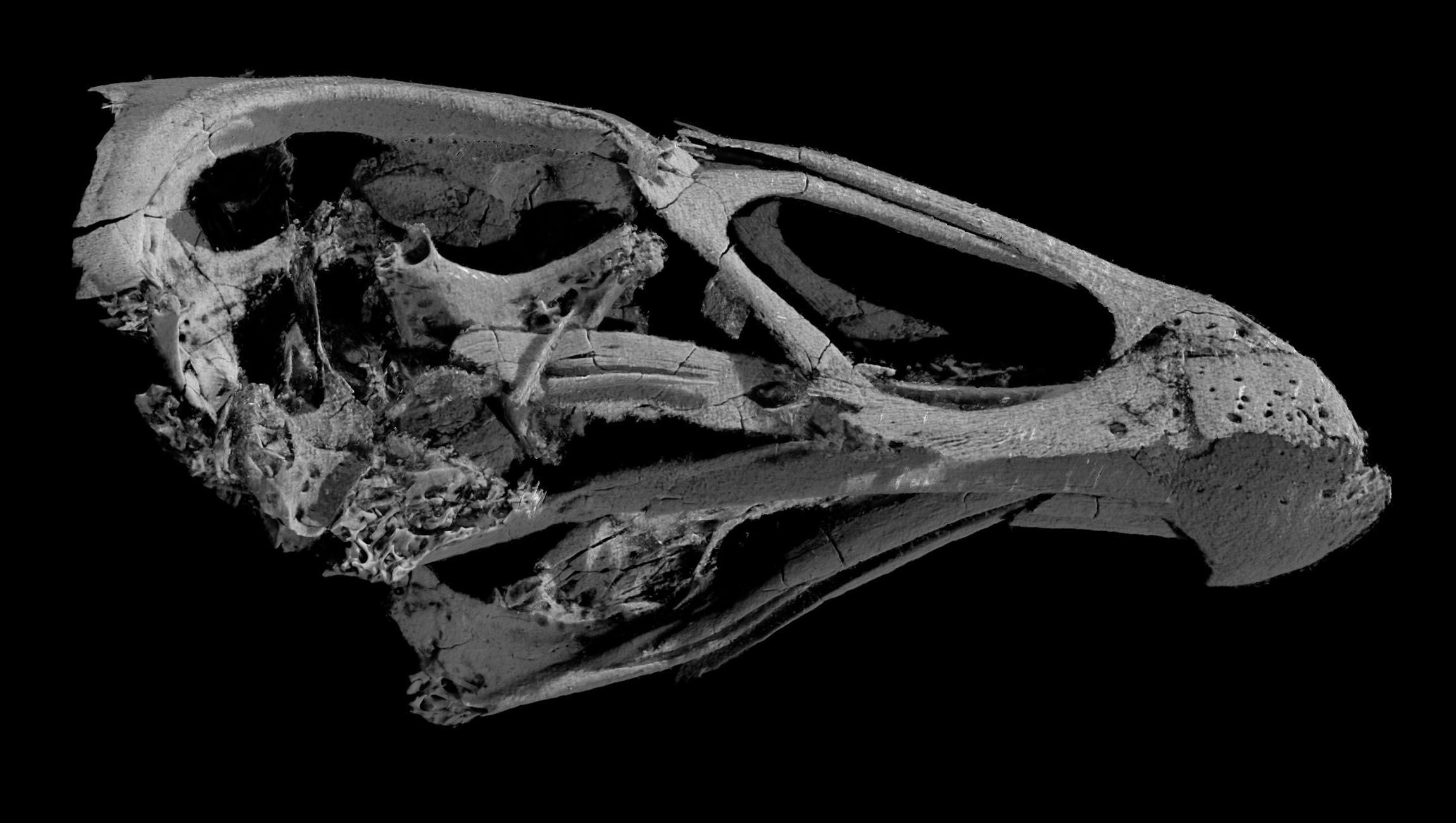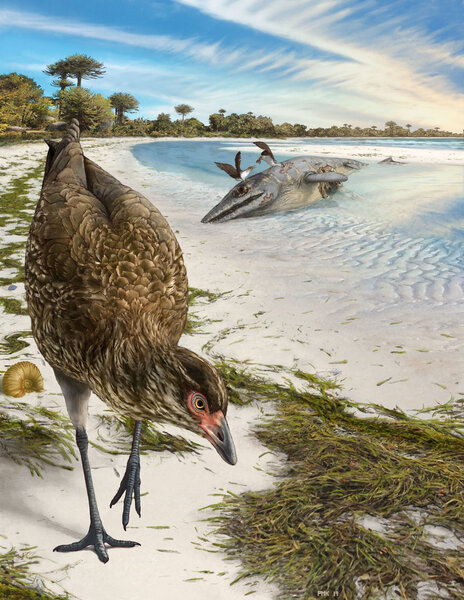Create a free profile to get unlimited access to exclusive videos, sweepstakes, and more!
Wonderchicken fossil has just unearthed the origin of birds—and how they survived the mass extinction

Wonderchicken sounds like a legit kaiju adversary of Godzilla, except it actually existed.
The 66.7 million-year-old "Wonderchicken" sounds like a thing with the size of a building that can blast things with laser vision (or something like that). While it couldn’t do that, this extinct creature was found to have the best-preserved skull of any bird fossil and is the oldest modern bird skull ever found—meaning, a legit bird and not a feathered dinosaur. It is also demystifying not just the origin of modern birds, but why these birds made it through the mass extinction that ended up obliterating Godzilla-size dinosaurs.
“Asteriornis maastrichtensis exhibits a previously undocumented combination of galliform (landfowl)-like and anseriform (waterfowl)-like features,” said paleontologist Daniel J. Field of Cambridge University, who recently published a study in Nature, adding that Wonderchicken had advantages which “influenced the persistence of [modern] birds through the end-Cretaceous mass extinction.”
Fossils of any bird from the late Cretaceous are rare. How modern birds emerged was something that remained buried with Wonderchicken until now. What is even more amazing is that the skull of this incredibly preserved fossil was easily recognizable to Field and his research team as a modern bird skull, never mind the oldest neornithine (modern bird) skull known to exist. Hi-res X-ray CT scans revealed an almost sci-fi mashup of a chicken and a duck that was part of the group Galloanserae, which includes fowl like chickens, ducks, quails, and other similar species.
Wonderchicken was unearthed in Maastricht, the Netherlands, which gave the team unprecedented evidence that Europe was one of the most important regions associated with modern bird evolution.
Prehistoric birds are thought to have evolved from therapod dinosaurs sometime during the Jurassic period, around 165-150 million years ago, though some paleontologists beg to differ on what exactly separated them from feathered reptiles. Different species of proto-birds began to appear during the Jurassic and the Cretaceous. They were eventually wiped out and survived by modern birds, whose lightweight, hollow bones, winged bodies and often aerodynamic arrangement of feathers (there are a few flightless misfits) continued evolving into at least ten thousands of species over tens of millions of years.
But what was it that made Wonderchicken able to survive the epic asteroid collision? Field thinks this has something to do with how it was a small ground dweller that lived near the beach, where massive dinosaurs that once ruled the waters must have been washing up as corpses. It’s possible that being near cool water while most of the planet was exploding with volcanoes saved it from immediate extinction. Maybe being small and living on the shore were also assets, because it wasn’t a huge beast during a time when dust and toxins were raining down from the sky and poisoning the water. Don’t forget that the larger you were, the more you needed to eat, and if all that was dying out … you get the point.
No wonder Wonderchicken’s scientific name is Asteriornis. The name encompasses both parts of its extraordinary existence. Asteria was the ancient Greek Titan goddess of falling stars, which is appropriate, seeing how birds ended up surviving a massive asteroid impact whose effects ended the dinosaurs. She could also turn herself into a quail.
Dinosaurs might have terrorized Earth for millions of years, but it seems that his time, the little guy won.
(via Cambridge University/Nature)















